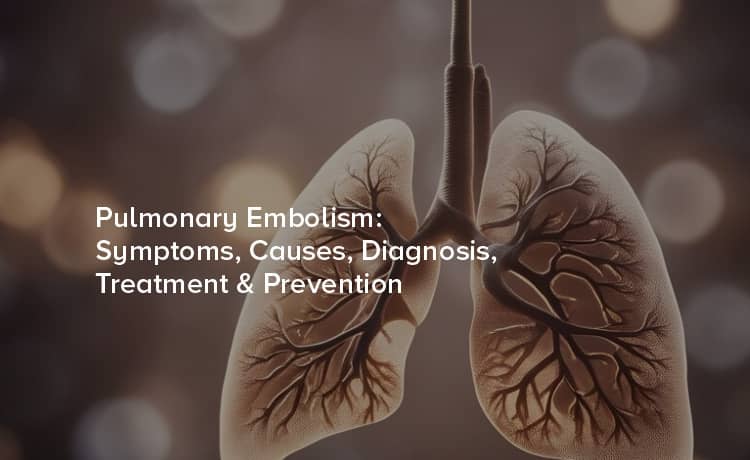
Pulmonary Embolism is a grave condition that can unexpectedly afflict even the healthiest individuals. It occurs when a blood clot lodges in the lungs' arteries, posing severe health complications and potentially life-threatening consequences.
A pulmonary embolism (PE) is a sudden blockage in one of the pulmonary arteries within the lungs. Typically, it arises from blood clots that travel from the legs or other parts of the body to the lungs. Due to the complexity of Pulmonary Embolism, it is essential to have a clear and in-depth comprehension of this condition as it directly affects the vital function of oxygenating blood.
The symptoms of Pulmonary Embolism can vary significantly based on the size of the clot, the extent of lung involvement, and overall health, particularly the presence or absence of underlying lung or heart diseases. Common Pulmonary Embolism Symptoms include:
If you experience any of these symptoms, seeking immediate medical attention is crucial.
Various factors can trigger pulmonary Embolism. Pulmonary Embolism causes range from genetic predispositions to lifestyle choices. Key risk factors include:
To diagnose Pulmonary Embolism, doctors typically rely on:
Each of these diagnostic tests assist medical professionals in determining the presence and severity of a blockage.
After diagnosis, Pulmonary Embolism treatment focuses on preventing further clots and reducing the risk of future complications. Treatment may include:
Each patient's situation demands a personalized approach aligned with their unique medical history.
Given the severity of Pulmonary Embolism, proactive measures should be taken whenever feasible:
Implementing lifestyle modifications can significantly reduce the risk of developing blood clots.
In summary, pulmonary Embolism is a severe medical condition that requires prompt attention. Early detection and treatment can be lifesaving, significantly reducing the risk of complications. Stay vigilant about the warning signs of Pulmonary Embolism and take proactive steps to mitigate your risk. Remember, attentiveness and action towards your health can sometimes be the difference between life and death.
Call us now at 040 67 19 19 19 to schedule your appointment, or conveniently book online by filling out the form on our Citizens Specialty Hospital. Take the first step towards improving your health today!